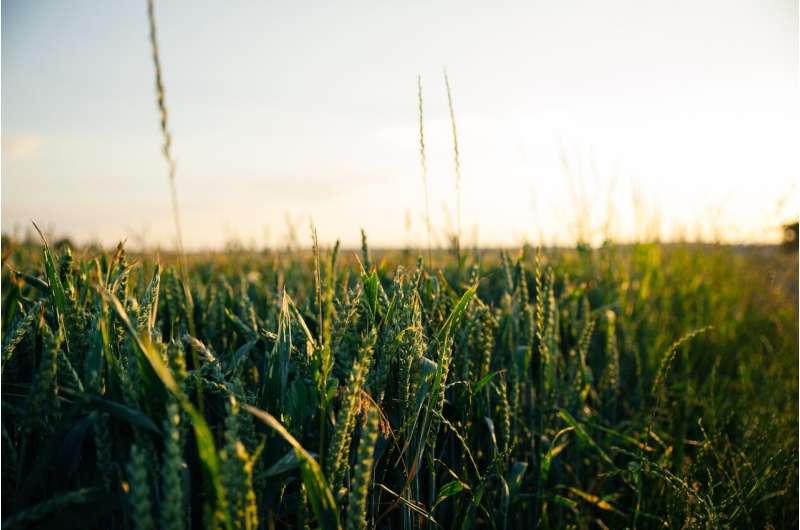Scientists uncover pathogen's similar impact on two very different crops

Bacterial blight leads to browning and sometimes the death of important crops. Most famously, late blight of potato resulted in the Great Irish Famine. Blight continues today, affecting crops around the world. One form of bacterial blight (caused by Pseudomonas cannabina pv. alisalensis or Pcal) affects cruciferous plants, such as cabbage, as well as green manure crops like oats.
Pcal is known to use virulence factors, but these factors have not been investigated until recently, when scientists from the University of Tsukuba in Japan conducted research into coronatine (COR) function, one of the pathogen's well-known virulence factors. A phytotoxin, COR is known to aid pathogen growth and lesion formation or expansion by reopening stomata, which makes the plant more vulnerable, but its exact role in Pcal infection was unknown.
Investigating the interaction between Pcal and cabbage and oats, the University of Tsukuba scientists found that COR does reopen the stomata but that it also suppresses salicylic acid, which plants use to protect themselves from pathogens. Through these actions, COR helps Pcal successfully infect the plant, leading to bacterial blight.
"Because of the unique Pcal characteristics, which can infect both dicot and monocot plants, we were able to investigate COR functions in the interactions between the pathogen and two very different plants: cabbage and oat," explained scientist Nanami Sakata, who hopes that this research can be used to develop bacterial pathogens protection methods or chemicals that target pathogen infection processes. "We believe that the reveal of this virulence mechanism can lead to the development of new disease control strategies."
The research was published in Molecular Plant-Microbe Interactions.
More information: Nanami Sakata et al, Coronatine Contributes to Pseudomonas cannabina pv. alisalensis Virulence by Overcoming Both Stomatal and Apoplastic Defenses in Dicot and Monocot Plants, Molecular Plant-Microbe Interactions (2021). DOI: 10.1094/MPMI-09-20-0261-R
Journal information: Molecular Plant-Microbe Interactions
Provided by American Phytopathological Society





















